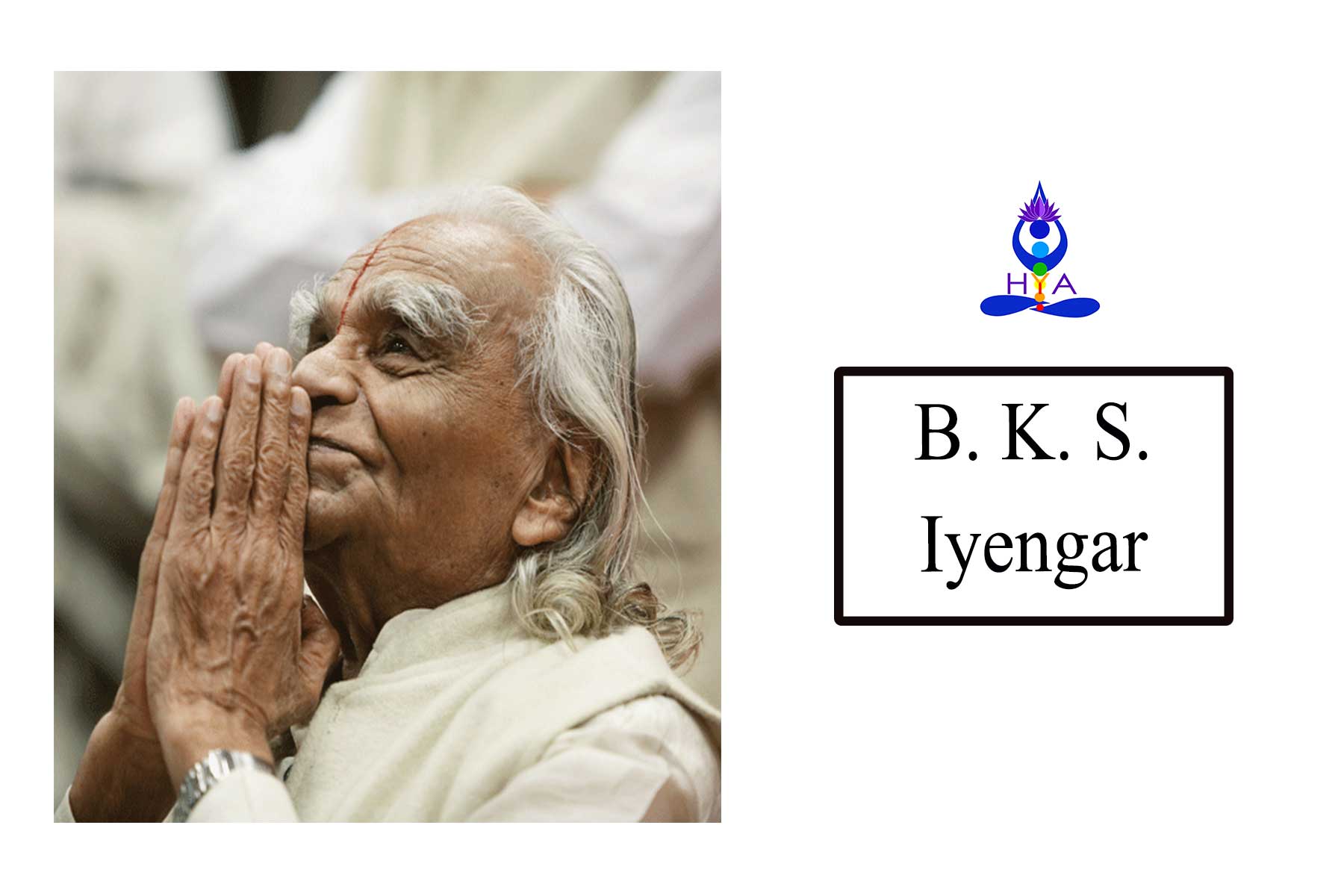
13 Jul 2021 HYN Himalayan Yoga Academy
Bellur Krishnamachar Sundararaja Iyengar (B K S Iyengar) (14 December 1918-20 August 2014) was a founder of Iyengar yoga and one of the most influential yoga teachers in the world. According to him, yoga is “meditation in action”. His teaching includes all eight elements of asana practice. His yoga technique emphasizes precision, alignment, and focus on the structural alignment of the physical body.
It differs from other styles of yoga in three ways: precision, sequence, and use of props. Through slower movement and an emphasis on quality over quantity, Iyengar yoga combines asanas (poses) and pranayama (breath) to build stamina, strength, and flexibility.
Iyengar was a sickly child who suffered from tuberculosis, typhus, malaria, and malnutrition as a child. He did not do very well in school either. His life was turned around when he was 15 years old and visited the Mysore ashram of his brother-in-law, the yoga master T. Krishnamacharya. His brother-in-law suggested to practice yoga for improving health.
Iyengar spent his teenage years immersed in Ashtanga yoga by T. Krishnamacharya. According to Iyengar “This was to be the main turning point of my life”. At the age of eighteen Krishnamacharya sent Iyengar to Pune to spread the teaching of yoga. It was difficult for Iyengar to teach because of his poor language skills. He spoke English badly and the local language, Marathi not at all.
The yoga students were more advanced in yoga than him. Also, the yoga students were older and in better condition than Iyengar. So, he practiced yoga up to 10 hours a day and he aimed to be a total yoga expert. After some years, he launched a career as an independent yoga teacher. After seeing him in a more settled existence, the Iyengar family arranged his marriage to 16–year–old–girl Ramamani and they married happily. Ramamani became a strong supporter of Iyengar’s enthusiasm for yoga. The married life was happy and long and produced six children.
Iyengar began to attract many famous Indians as students like philosopher J. Krishnamurti and cardiologist Rustom Jal Vakil. Vakil’s wife introduced Iyengar to the star American classical violinist Yehudi Menuhin. He gave him the opportunity that transform Iyengar from an Indian yoga teacher into an International guru. Menuhin suggested that Iyengar return with him to the West and give yoga lessons in Europe and The United States.
Iyengar taught yoga to Menuhin’s friend and highly visible group. His followers who referred to him as Guruji maintained their adherence despite his habit of physically slapping students who made errors. Some complained that his initials B.K.S. could stand for beat, kick, and slap.
Iyengar taught Elizabeth, The octogenarian Queen of Belgium. And he did a yoga demonstration for the Soviet Union’s Premier, Nikita Khrushchev. Americans’ interest in yoga was growing but Iyengar was repelled by the American’s materialistic behavior. By that time, he had become a well-known author as well as in the rest of the world.
Iyengar has written many books based on yogic practice and its philosophy including “Light on Yoga”,” Light on Yoga Sutras of Patanjali, and many more. Iyengar Yoga was one of the first schools to offer teacher training programs in San Francisco, California, It was and still is a major hub of yoga in the West.
Iyengar divided his time between India and the West in the later decades of his life. He established the Ramamani Iyengar Memorial Yoga Institute in Pune, which became a major center for learning Iyengar yoga. After he retired from teaching, his two children, daughter Geeta, and son Prashant, took over as his successors and continued his work as gurus. Even in his 90s, Iyengar practiced yoga daily and could stand on his head, holding the position for half an hour.
3 October 2005 was declared as “B.K.S. Iyengar Day” by the San Francisco Board of Supervisors. On 14 December 2014, he was honored with a Google Doodle.
B K S Iyengar Contribution on yoga
- Creating an analytical approach to the implementation of asanas
- Detailing the bodily practise
- Replenishment of the range of exercises
- Standardization of the learning process
- Introduction of the “props”-auxillary tools
- Popularization of yoga in the west
